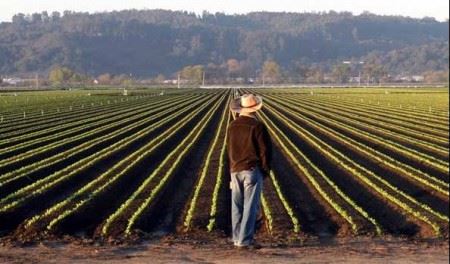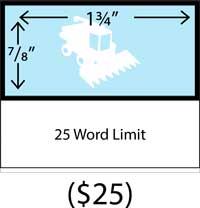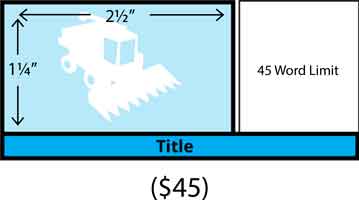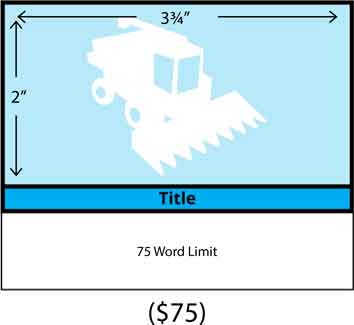The decline of farms and farmland in the U.S. has been a growing concern among farmers, economists, policymakers and others for many years. The issue is complex, touching on economic viability, food security, rural livelihoods, environmental sustainability and even national security.
While some, like the American Enterprise Institute (AEI) and others, argue that this decline is a natural outcome of economic progress, technological achievement and agricultural consolidation, others warn of long-term consequences that could negatively impact both domestic and global food systems.
The Extent of the Decline
Over the past several decades, the number of farms in the United States has steadily decreased. According to the U.S. Department of Agriculture (USDA), the number of farms peaked at around 6.8 million in 1935 and has continued to decline since then. For example, according to the most recent USDA Census of Agriculture, there were 1.88 million U.S. farms in 2024, down 8 percent from the 2.04 million found in the 2017 census.
Similarly, acres of land in farms continued a downward trend with 876 million acres in 2024, down 3 percent from 900 million acres in 2017. The average farm size was 466 acres in 2024, only slightly greater than the 440 acres recorded in the early 1970s, according to the USDA.
The American Farmland Trust (AFT) offers what some consider more alarming data as it relates to the decline in farmland, saying its research analysis shows the U.S. loses an average of 2,000 acres of farmland every day. Between 1997 and 2017, nearly 31 million acres of farmland – an area roughly the size of Iowa – were converted to non-agricultural uses, according to the AFT, which says this shift has been driven primarily by urban sprawl, as cities expand into surrounding rural areas to accommodate growing populations. The AFT’s analysis comes from data contained in the U.S. Census of Agriculture.
Fewer Farms and Less Farmland But Increased Production
Despite there being fewer farms and reduced crop acreage, the value of agricultural production in the U.S. has increased by 40 percent (17 percent in inflation-adjusted dollars), reaching $543 billion, according to the USDA.
This increase in productivity underscores the impact of technological advancements and efficiency gains, allowing farmers to produce more with fewer resources. It also raises the valid question of just how concerned we should be about the reduction in the number of farms and farmland in the U.S. because less (farms and farmland) has thus far resulted in more (increased agricultural production value).
To date, the production value of agriculture continues to increase despite a decline in the number of farms and farmland. This has largely been because of advances in science-based technology, along with the innovative nature of farmers, who are constantly doing more with less. However, this doesn’t mean the power of technological innovation will continue in this same linear fashion forever, nor does it negate the fact there are real and legitimate concerns for the nation about the continued loss of farms and decline in farmland.
Rather, the decline in farms and farmland in the U.S. is a serious issue with widespread implications and deserves greater attention, discussion and debate.
For example, these are five key reasons to be concerned about the decline in farms and farmland in the U.S. There are additional reasons as well.
Food security and supply chain stability: As farmland disappears, the U.S. becomes more dependent on food imports, making the country vulnerable to global supply chain disruptions, price volatility, and potential food shortages. This ultimately could become a national security issue as well.
Environmental impact: Farmland provides essential environmental benefits, including carbon sequestration, biodiversity support and water filtration. Losing farmland to urban sprawl or industrial development can lead to soil degradation, water shortages and increased carbon emissions.
Economic consequences: Agriculture is a key sector of the U.S. economy, supporting millions of jobs in farming, food processing and transportation. The loss of farms threatens rural economies and could lead to economic decline in agricultural regions.
Loss of rural communities and heritage: Farming has deep cultural and historical significance in the U.S. The decline of family farms erodes rural communities, leading to population decline, school closures and the loss of traditional farming knowledge.
Foreign ownership and land use changes: As farmland becomes more scarce, it is increasingly purchased by large corporations or foreign investors who may prioritize profit over sustainable agricultural practices, potentially leading to monoculture farming, overuse of resources, or land being repurposed for non-agricultural uses.

Doing More With Less: No Reason For Concern
On the other hand, the influential American Enterprise Institute (AEI), says in a recent report – “Is the U.S. Losing Farms at an Alarming Rate?” – that there’s no reason to be concerned about the decline in the numbers of farms and farmland in the U.S.
In the report, authors Barry K. Goodwin and Vincent H. Smith argue that despite the fact the number of farms in the U.S. have steadily declined over the past four decades, at the same time total agricultural output has steadily increased in response to the flow of science-based innovations in technology and management and economies of scale in farming that have substantially increased agricultural productivity. Therefore, they say that in terms of the viability of U.S. food and other supply chains related to agricultural output, there’s no reason to be concerned about the decline in farm and farmland numbers that have occurred over the last few decades, including the most recent 8 percent reduction.
The authors make the following conclusions in the AEI report.
“First, the decreases in acreage and in the number of farms reported in the 2022 census are not a new phenomenon – they reflect a long-run trend that characterizes fundamental changes in the structure of the US farm economy associated with increased productivity and the more efficient use of scarce resources.
Second, agricultural output – a more meaningful measure of the overall strength and viability of agriculture – has steadily risen over time. As far as land is concerned, farmers are indeed doing more with less. This should temper concerns over the fact that U.S. farmers are using 2 percent less land than they were five years ago and about 11 percent less land than in 1992.
Third, the areas planted to major crops vary from year to year in response to economic incentives. Some of these shifts reflect long-term changes in yields, prices and the profitability of different crops. For example, since the 1960s, the areas planted to corn and soybeans have systematically increased, while the areas planted to wheat and oats have sharply decreased.
Finally, US farm numbers have decreased at a faster rate than total acreage, which implies that farms are getting larger over time. This is a natural and classic example of economies of scale, in which fewer but larger and more efficient farms can produce more output.
Fewer farms and the use of fewer acres to produce more output, with some of those acres being placed into conservation uses in response to environmental policy initiatives, are scarcely causes for policy angst about any need for more farmers and more farmland. It is more a reflection of an increasingly efficient U.S. agricultural sector and, therefore, perhaps some reason for modest celebration.”
Security Concerns
In my view, the strongest argument for being concerned about the decline of farms and farmland in the U.S. is food security and national food independence.
Food sovereignty and food security are national security issues. As farmland disappears due to urban expansion, corporate consolidation and economic pressures on farmers, the nation becomes increasingly dependent on imported food. This creates vulnerabilities in the food supply chain, making the U.S. more susceptible to global disruptions, trade conflicts and supply shortages.
Thus far, technological innovation and other advances in farming have mitigated this from occurring in the U.S. – but that doesn’t mean it can’t happen. We need to monitor the nation’s food sovereignty and security closely as it relates to the continued decline in farms and farmland. It’s also important to remember that, once lost, farms and farmland seldom if ever return to agricultural use.







